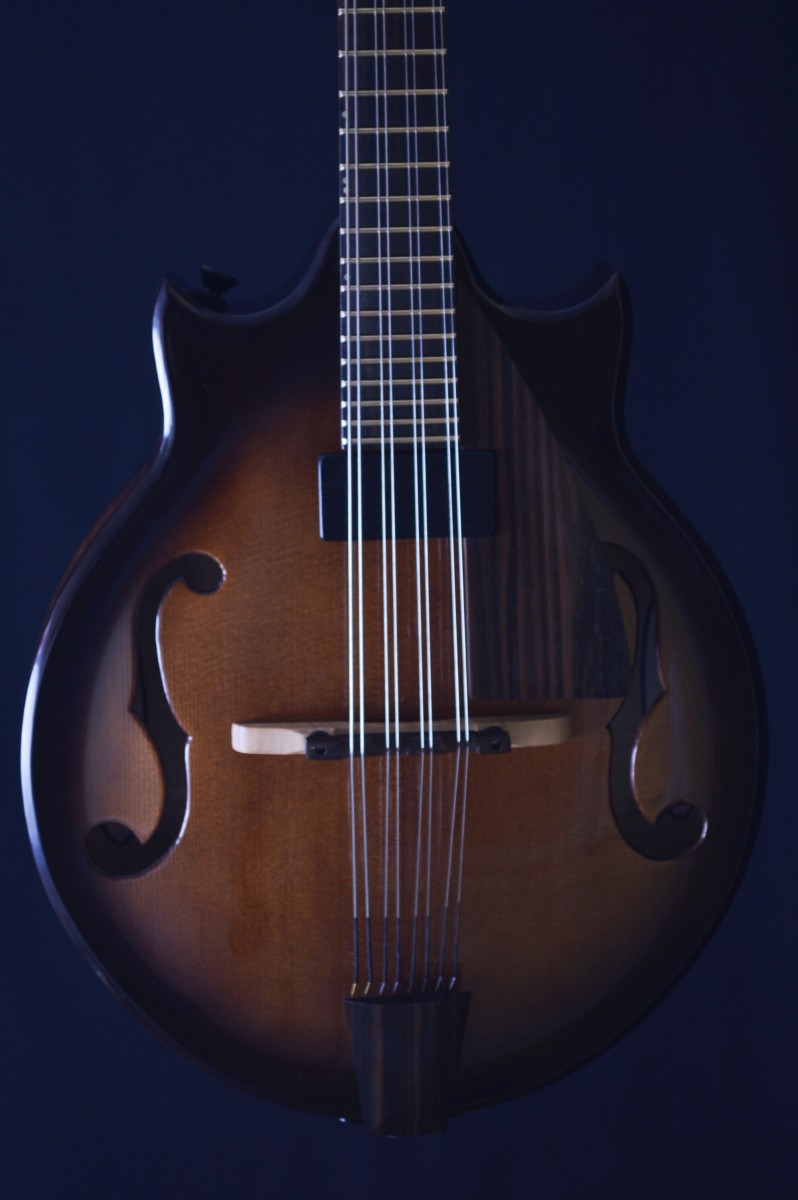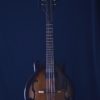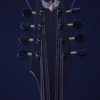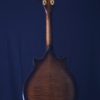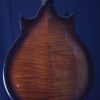Description
To create an ideal mandolin for jazz, Phoenix set out first to build a mandolin that met all the acoustical qualities a jazz musician wants. The sustain and playability of the Neoclassical model were perfect but more bass and more “punch” were needed. The Neoclassical sounds best with Thomastik medium strings, but a jazz mandolin needs to move up to the Thomastik heavy strings, which are still light-medium strings in the mandolin string family. This meant changing the graduation of the top for maximum performance while keeping the unique Neoclassical tone bar arrangement. The particular tones of jazz are found best in European spruce, so the finest grade of Bosnian spruce was used in the top. For the sides, back and neck, the softer red maple, while still highly figured, was used to keep the tone warm and “dark.” Higher and wider frets were also needed to allow the jazz player to “bend” the strings and chord quickly and cleanly. Then, to emphasize the distinction of the Jazz model from the rest of the Phoenix line, striped Macassar ebony was used for the headstock overlay, fingerboard, bridge saddle, tailpiece overlay, and finger rest. The fingerboard also has micro snail dots for position markers offset under the bass strings matching the dots on the side of the fingerboard. To harmonize with the Macassar ebony, a lighter Deluxe stain was used under the varnish finish. Black and gold hardware complete the elegant appearance. The finished Jazz model was exactly what players were looking and listening for.
The next step was to incorporate electronic pickups that provide all the options jazz players seek. The McIntyre Feather pickup, tried and proved on other Phoenix models, provides the wood sound amplification that is one aspect of mandolin sound. A suspended magnetic pickup custom created by Kent Armstrong provides the electronic sound that is an essential part of jazz. A 22-fret fingerboard is used to position the pickup where Kent Armstrong recommends. A stereo end pin jack is the output connector; a mono cable connects only the magnetic pickup. With the Jazz mandolin, you have three sounds to arrange and blend: 1) the acoustical sound of the mandolin; 2) the wood vibration sound from the piezo pickup; 3) the string vibration from the Armstrong magnetic pickup. The creative player can manipulate these sounds in endless varieties, especially if a dual pre-amp is used with a stereo amp or two amps.

